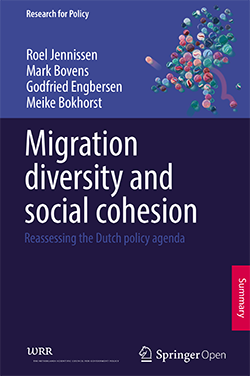Migration diversity and social cohesion. Resassessing the Dutch policy Agenda
Migration patterns in Western European countries have changed fundamentally in recent decades. A more active policy should be pursued to familiarize all new immigrants with society and to include them in it. This is necessary because migration to Europe is structural in nature. Policymakers have grappled with ways of responding to this increase, which has resulted in a plethora of policy initiatives, some more effective than others. In 'Migration diversity and social cohesion. reassessing the Duth policy agenda', the WRR offers both a sense of strategic direction as well as more specific, actionable advice. It brings together a mixture of policy areas that touch upon issues of diversity, immigration policy, education, and labour policy.
Fourfold increase in diversity
The Netherlands, on which this book mainly focuses, has become a dynamic migration society in which people from all parts of the world live side by side. The numbers arriving here continue to increase and there is also greater transience as more and more migrants leave again after staying only temporarily. Increasing diversity in the Netherlands takes four main forms:
- Greater diversity by origin: Most immigrants to the Netherlands in the last century came from neighbouring countries, from former Dutch colonies, from Morocco or from Turkey. Since the end of the Cold War, however, they have been arriving from all parts of the world.
- Greater diversity by length of stay: More and more immigrants are now just ‘passing through’ the Netherlands. This is another clear change from what we were once used to. Dutch society appears to be increasingly one of ‘transient’ migration.
- Greater diversity by motivation and status: There is also now much greater variety in terms of people’s reasons form migrating and their socio-economic status.
- More geographical diversity: Today’s newcomers are not distributed evenly across the country.
Three sets of Recommendations
The increased diversity and transience, and structural nature of migration to the Netherlands, call for a proactive policy approach with three key pillars: 10 From ad-hoc to systematic policy, 2) Consider conciciality as well as integration and 3) Room for local variation. In describing the three key pillars in more detail, this report focuses on thre particular issue:
- Improving the reception and civic integration of all migrants
- Promoting social cohesion, especially at the local level
- Make migration policy more conducive to social cohesion
